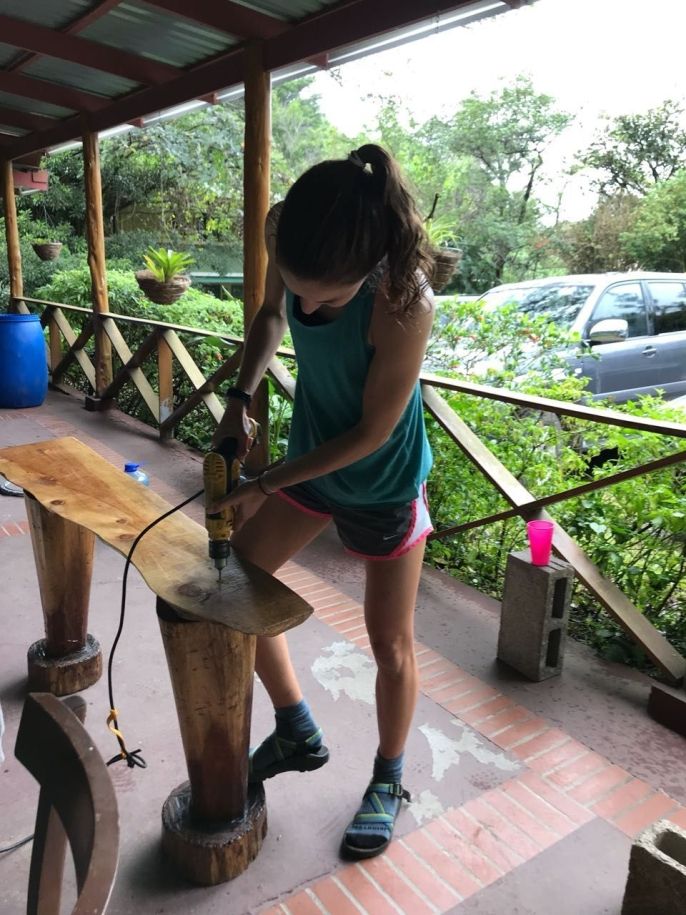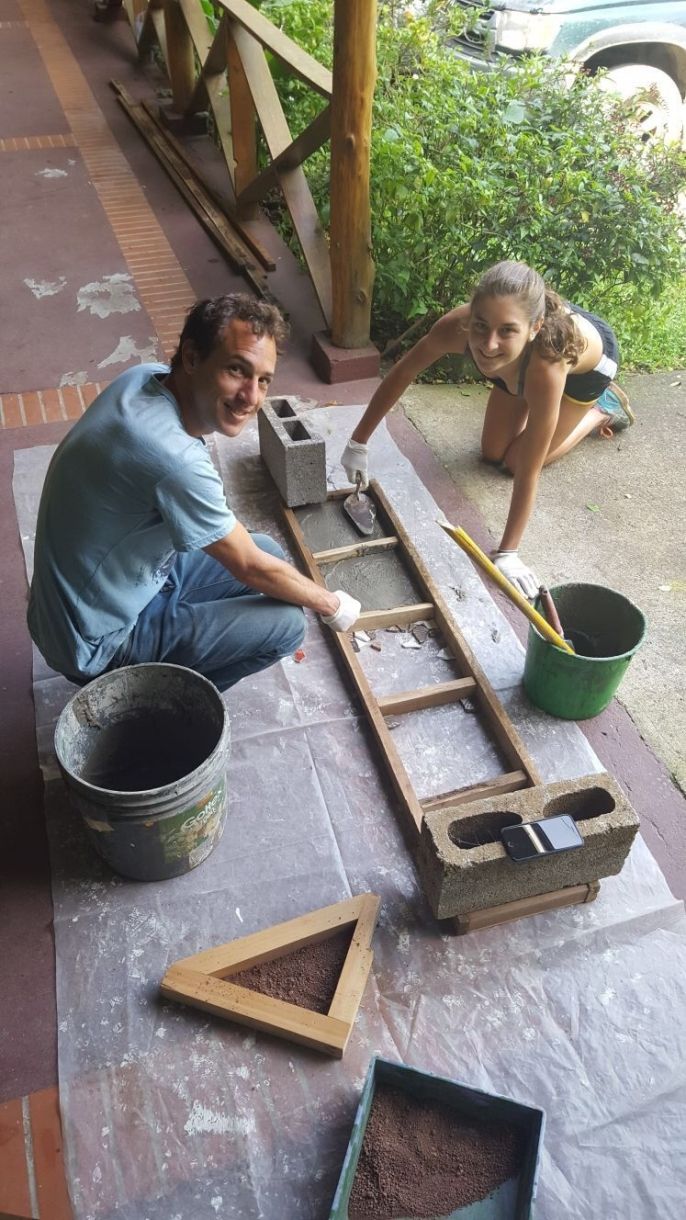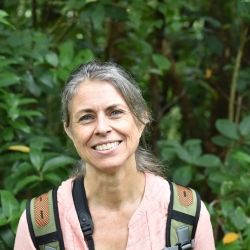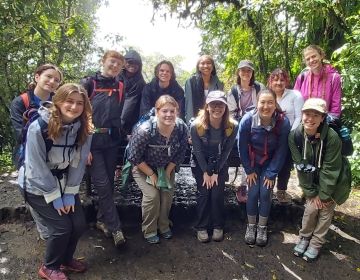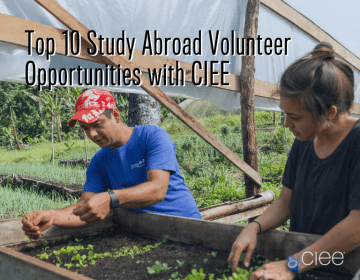SUSTAINABLE LANDSCAPING IN MONTEVERDE, COSTA RICA, BY GRACE GASKIN (BERRY COLLEGE): SUSTAINABILITY AND THE ENVIRONMENT INTERNSHIP
I chose to work with native plant landscaping because there is a need to re-establish native vegetation in the landscaping around a local business as a means of creating a more resilient environment. The particular focus of my work is to remedy the damage caused to the trails around Art House following Tropical Storm Nate. Art House experienced extensive flood damage, partially caused by unsustainable landscaping methods, such as the replacement of native plants with invasive ornamental plants which lessens the resiliency of the area. I have prior experience working with native plants as means for sustainable landscaping in flood control. Previously, I had worked to restore the riparian zone along Nancy Creek at Marist School in Atlanta Georgia. Similar to this internship, that restoration project involved removing invasive vegetation and replacing it with native vegetation that would improve flood control. For this reason, I took a particular interest in this internship.
The main focus of this internship is to use sustainable landscaping in order to improve the quality of the environment of the trails in front of Art House. This includes the removal of invasive ornamental plants and replacing them with native vegetation which will not only be more resilient in the face of events such as flooding from storms, but will also preserve biodiversity as well as add an aesthetic component to the area which will hopefully lead to an increased interest in the trails, as well as Art House. Following the storm and the resulting flooding, the property of Art House had aextensive issues that could not all be handled by the owner. This internship is benefitting not only the environment, but also the local community by helping this local business fix some of these damages.
After initially analyzing the property, I determined that the biggest impact could be made by improving the entrance to the trails that lead up to the Art House gallery. The immediate entrance from the main road was flooded and had large amounts of mud and debris which had been deposited when the river swelled. As of October 18, 2017, I have removed the debris and level the soil which had made the entrance difficult to pass through. I also have removed large groups of invasive plants which did not provide any soil stabilization along the creek, a factor that contributed to the large amount of flooding in the entrance. In addition to removing the mud and these plants, I have created 10 cement stepping stones decorated with recycled glass and tiles collected from various places in Monteverde. These will be placed strategically in the entrance as a means of minimizing the collection of mud and allowing for easier passage. The invasive plants which I removed will be replaced with native species that will provide soil stabilization with the long-term goal of offering a higher degree of protection from flooding. Finally, I have been constructing a bench from recycled wood, which will be placed at the entrance, with the goal of attracting more people into the area. Overall, my biggest contribution so far has been the progress of removing the problematic invasive vegetation which had contributed to the flooding and therefore decreased resiliency of the landscape. Through this internship, I have broadened my knowledge of the different techniques of sustainable landscaping, such as how the removal of the invasive plants and replacement with native plants will create a much more resilient environment in the face of increasing dramatic climatic events from climate change.
Related Posts
Costa Rica vs. Argentina: Which is Better for Study Abroad?
Imagine yourself sipping mate in a bustling Buenos Aires café or lounging peacefully in a hammock overlooking Costa Rica's lush rainforests. These contrasting scenes represent just a glimpse of the... keep reading
Happy Earth Day: Today and Every Day
Happy Earth Day! Every April 22, this global event comes around to remind us how precious our planet is, what sustainable efforts we can make to protect Earth, and that... keep reading
Top 10 Study Abroad Volunteer Opportunities with CIEE
Have you ever wondered if you could volunteer abroad? Perhaps you're looking into study abroad programs that provide international volunteer opportunities. If you’re itching to study abroad and truly make... keep reading
